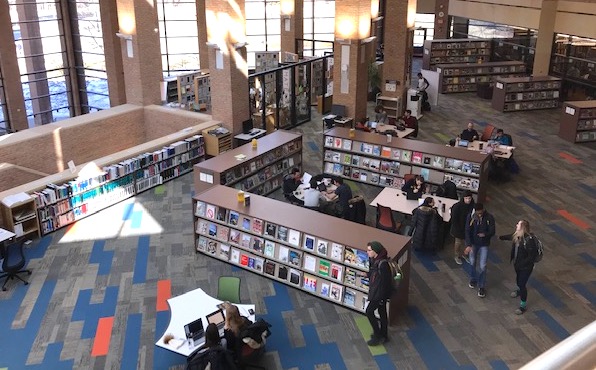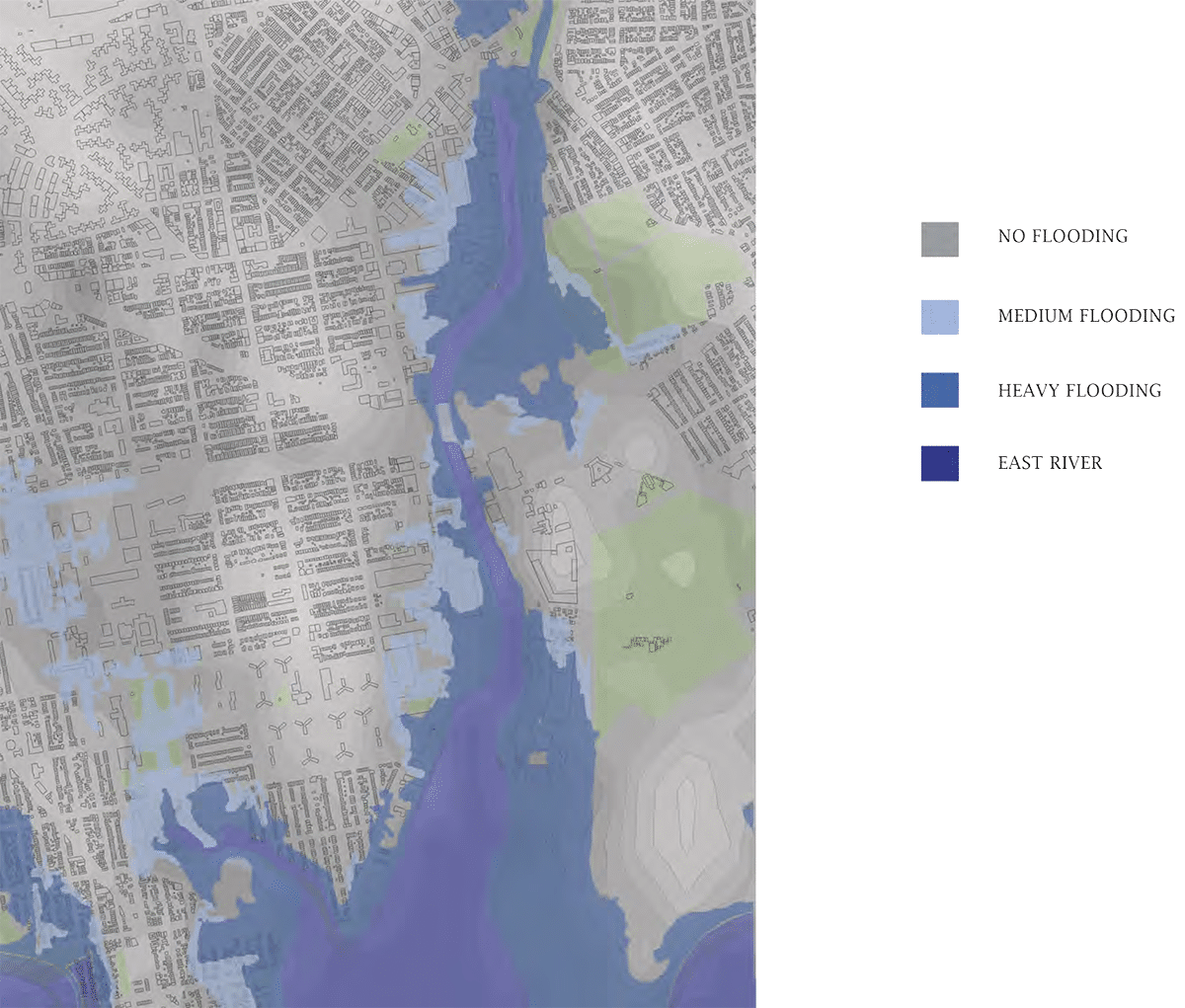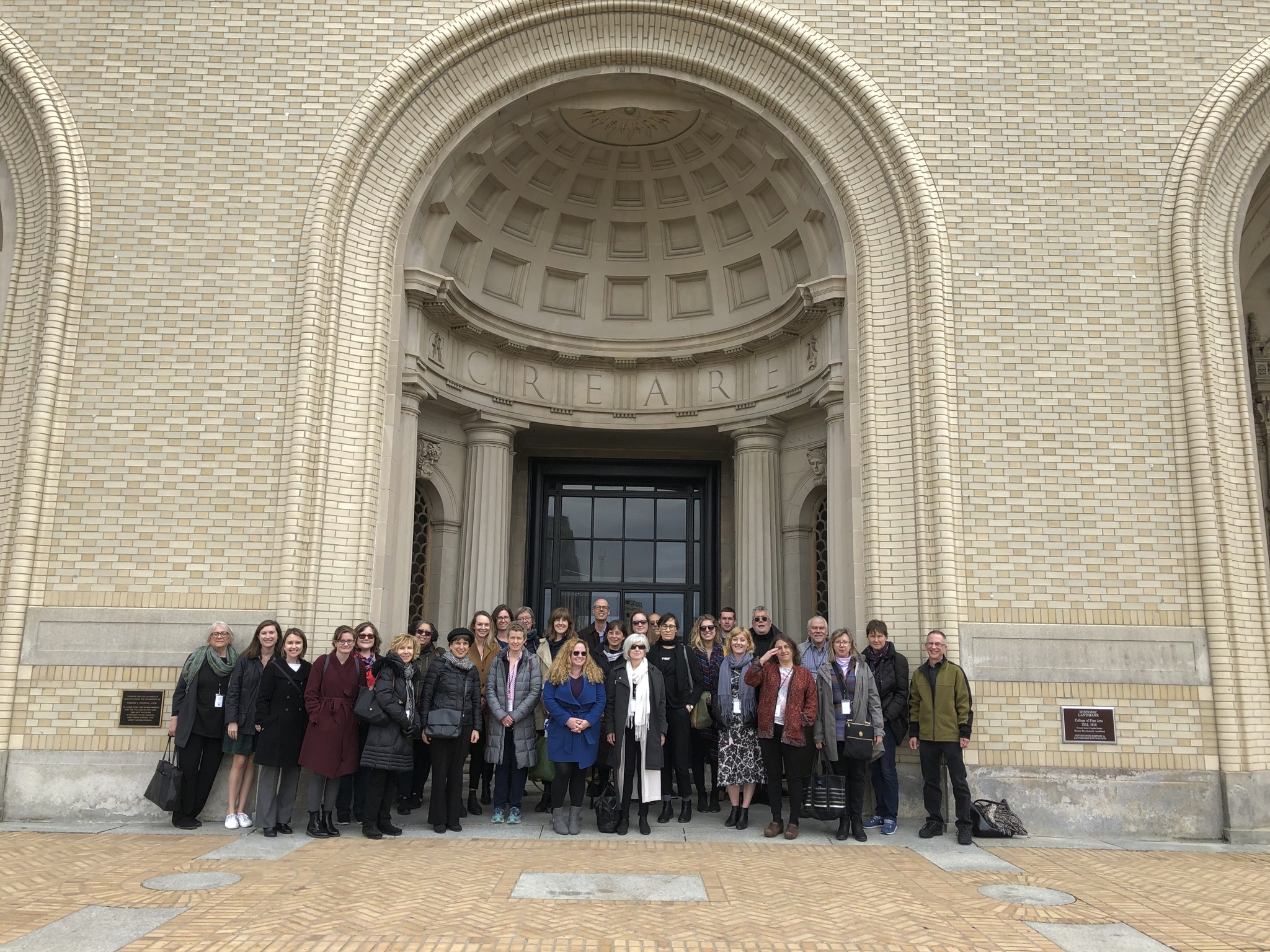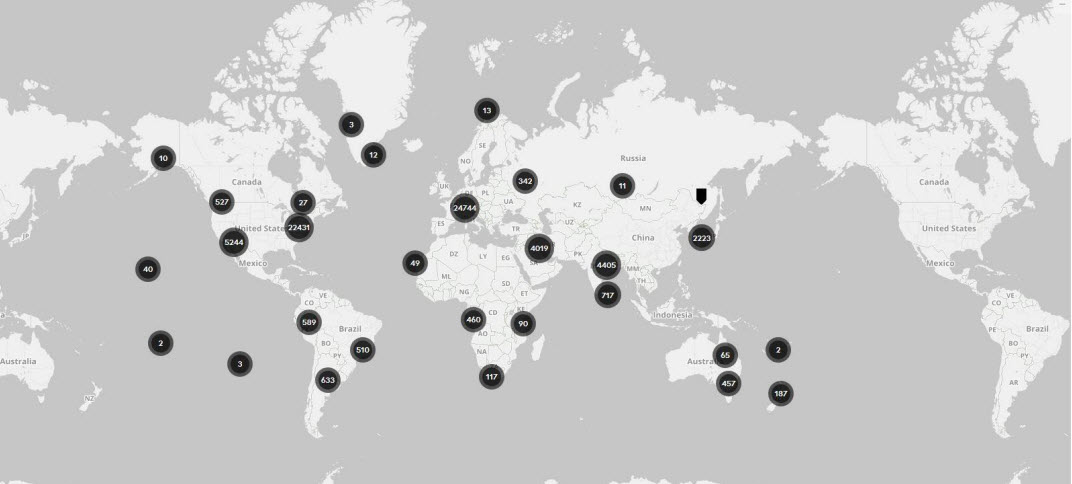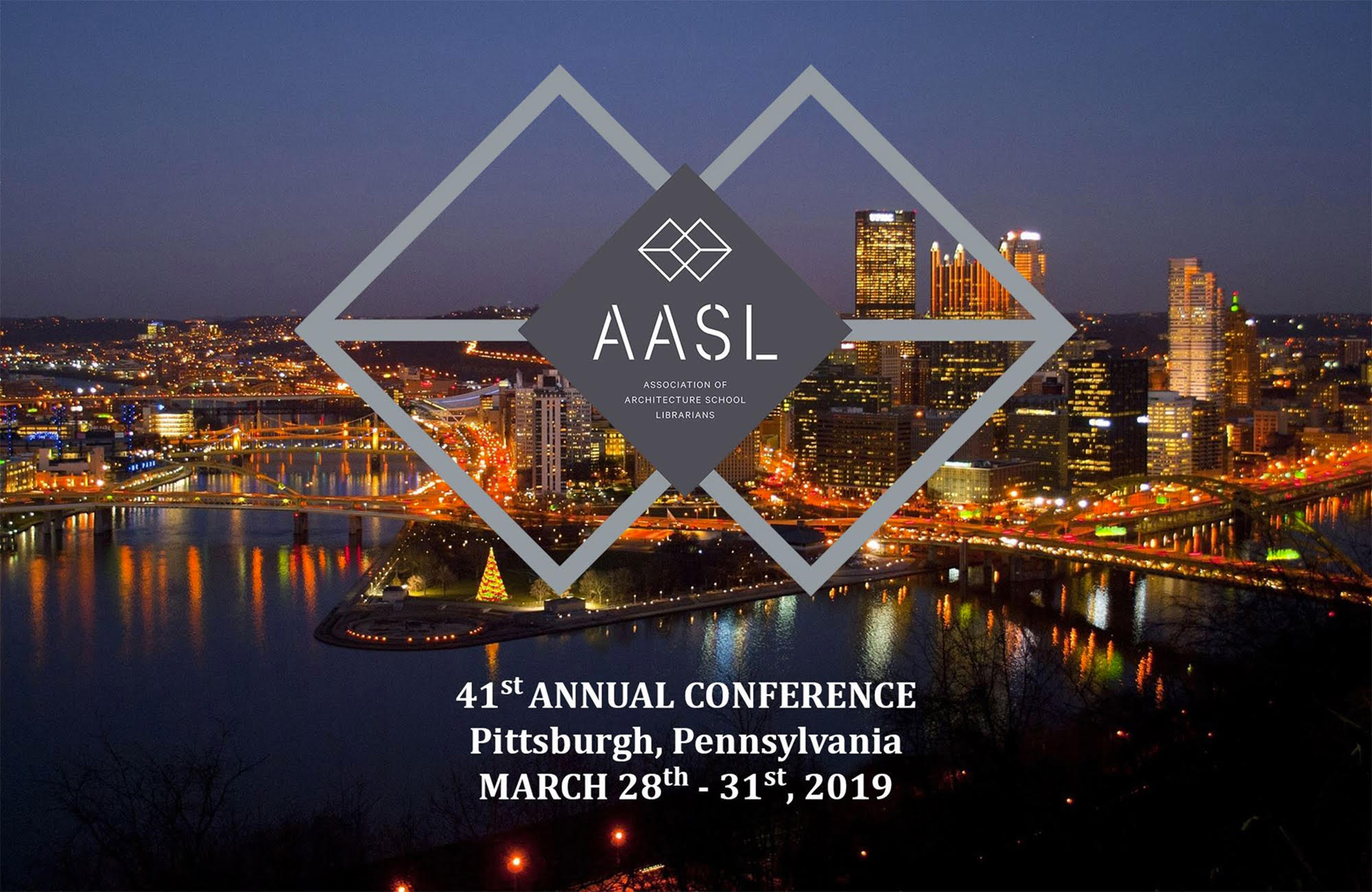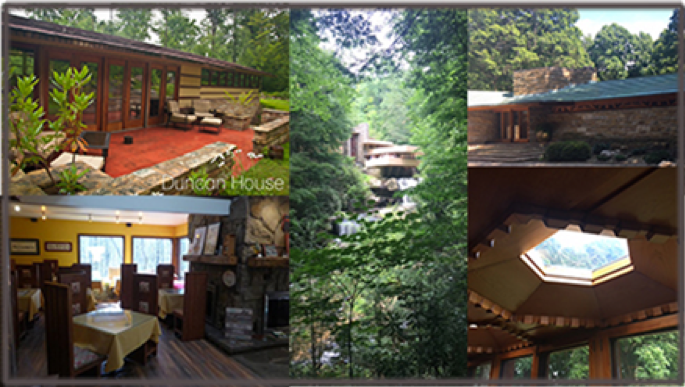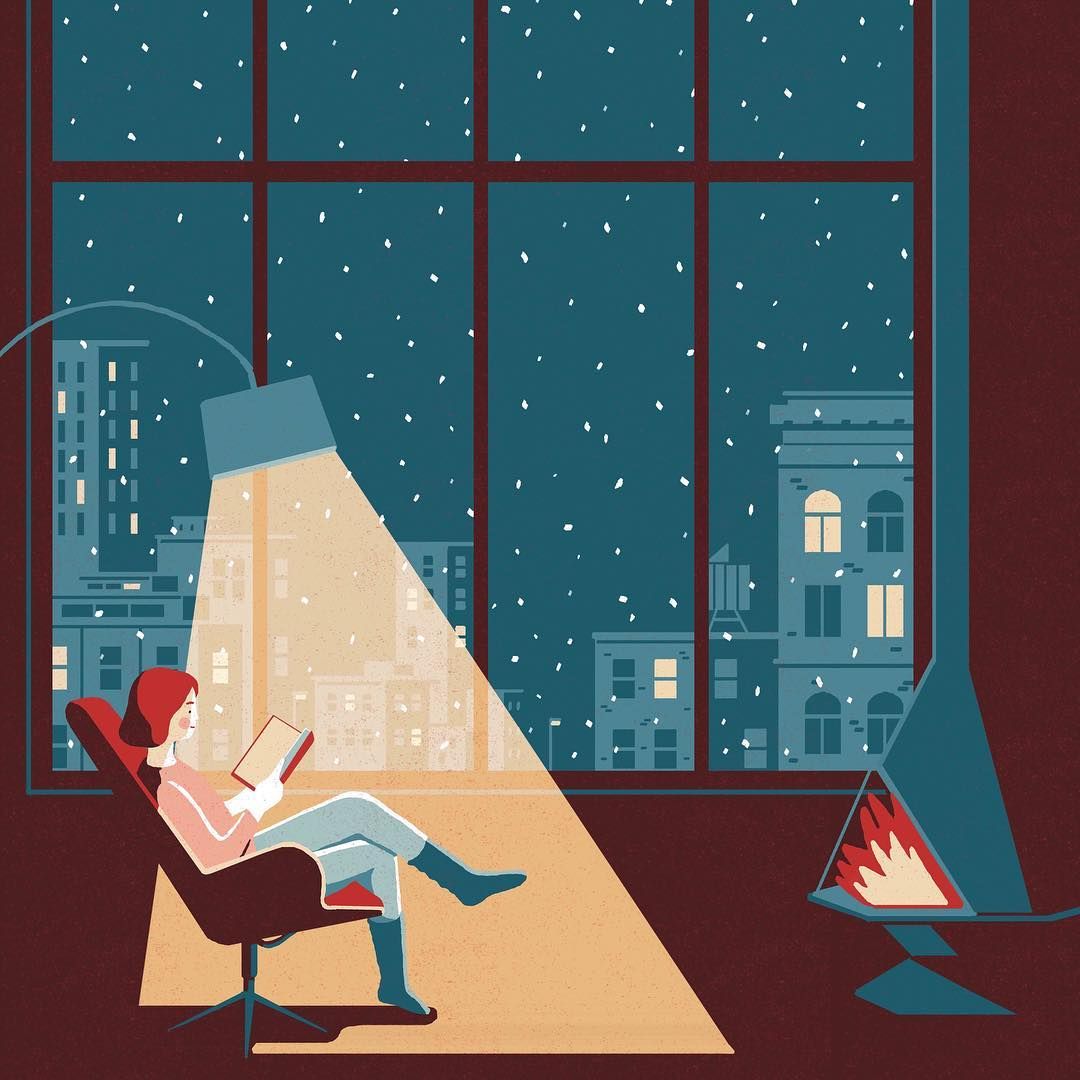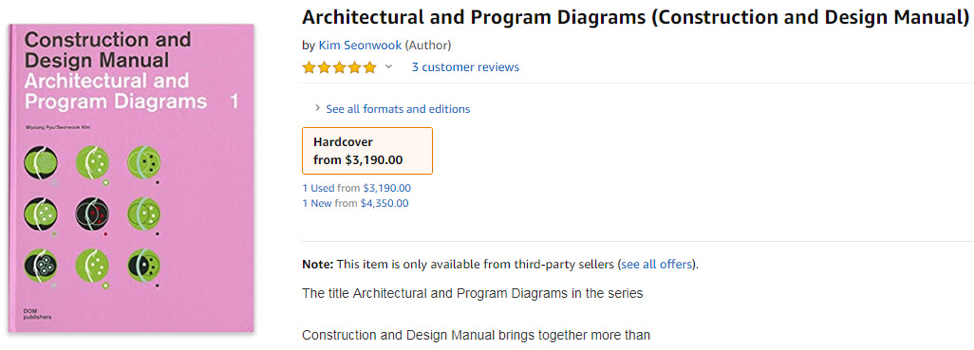Posts
They Stepped Up: Vendors During the Coronavirus
AASL Column, April 2020
Lucy Campbell and Barbara Opar, column editors
Column by Barbara Opar
It is a changed world out there. We in academia have had to adjust very quickly—faculty to preparing lectures with the resources on hand and then recording them online using newly prescribed software; librarians to dealing with reference queries that were once easy to answer in the print world but now with limited online content. And what about our students? They can no longer presume that they can consult older periodical issues or study structural systems on actual drawings. Many are unaware of what they cannot access. All of us have had to make quick adjustments to different resources and content.
But we have had support. Many vendors have stepped up and offered free content for the duration of the pandemic without the expectation of purchase. Examples are numerous and often surprising. By March 25, RedShelf and VitalSource opened access to hundreds of textbooks for free to faculty and staff at qualifying colleges and universities impacted by this crisis. Proquest is offering access to 150,000 titles. Sage Knowledge and Project Muse are on board as well as presses like Duke University and the University of Michigan. Brepolis and DeGruyter are among more commercial vendors expanding their access to nonsubscribers. Want to keep current with periodical literature? Then you can turn to Flipster or RBDigital. Streaming video content is being offered up by ArtFilms Digital, Kanopy, and Swank. The list goes on. Academic libraries with such access have often listed it right on their home pages. Your architecture librarians have taken this one step further and tailored this information for your own institution.
But there are two other important sources of content that I wish to bring to your attention. The first is Hathi Trust which was initially designed as a collaboration of the Big Ten Academic Alliance, the University of California system and the University of Virginia to establish a repository for archiving and sharing digital collections. Many other libraries have joined. As a repository, Hathi Trust contains both public domain as well as copyrighted material. By request, member libraries now have temporary digital access to over 50 percent of copyrighted print holdings. Libraries must meet standards such as no physical access to print collections and adhere to the Trust’s copyright guidelines. Check your libraries’ database menu. There are also ways to access some content as a guest at the organization’s site.
Everyone has also heard about the Internet Archive. But you may not know much about its latest initiative which some consider very controversial. The Internet Archive is a 501c 3 non-profit organization based in San Francisco and founded in 1996 by Brewster Kahle. To date, it has captured 20 petabytes of data. It partners with libraries to preserve and make accessible 20th-century resources in a broad array of topics and formats. The mission of its Open Library is “universal access to all knowledge”. In early March as the United States was beginning to understand the pandemic, the Internet Archive launched the National Emergency Library. Instead of controlling the number of copies of a title circulating at a time, the Library decided to remove limits. Traditionally, the number of copies available for circulation was based on the number of print copies in its own collection, and a waitlist was created for additional borrowers. That feature has been removed, allowing for unlimited access. The Internet Archive does not claim to include everything, but a quick search of the late Michael Sorkin’s writings shows some interesting content. One of two titles available here, but not commercially through any vendors, is the popular Variations on a Theme Park, making the Internet Archive another valuable source of online content. Initially well received and endorsed by a significant number of libraries including MIT, the Archive is now facing lawsuits and backlash from groups including the Authors Guild.
Life as we knew it has changed overnight. We are all proceeding as best as we can and making use of what is at hand and easily obtainable. What is certain is that each of these initiatives has helped in some way. Library suppliers have been offering deferred payments and cost reductions. The free albeit temporary content has made a tremendous difference in the past month and a half and will continue to do so as we all work to provide the services for which we are responsible.
Books of the Decade - AASL January Column
AASL Column, January 2020
Lucy Campbell and Barbara Opar, column editors
Column by Barbara Opar
Books of the Decade
The end of a decade is always cause for both reflection and evaluation. That includes books. In late December of 2019, CNN posted online what they considered the most influential books of the decade. The article began with the statement that “A decade is in part defined by its books. And recent days have seen many roundups of the best books of the 2010s — the titles that critics consider the pinnacle of literary excellence.” (https://www.cnn.com/2019/12/30/entertainment/decades-most-influential-books-trnd/index.html.)
Some of CNN’s list was not surprising but still provocative. Included was Fifty Shades of Grey. Influential—yes. Of literary excellence—maybe not! I must also admit that I have not read a few of the titles on their list. But that list served to make me wonder what architecture books would be considered the most influential of the past decade. And what defines influence? Do already known authors continue to receive accolades and recommendations? Certainly, Rem Koolhaas fits that criteria. I have included several of his books on my list and feel that those titles are indeed ones with which most of you would agree. How important are library circulation counts or Amazon best sellers in determining influence? Do faculty referrals or use in academic course reserves trump general circulation? Some books receive high use in libraries or are cited for a few years but then seem to fade. Influence can derive from a combination of factors including traditional academic tracking like citation counts and mentions on social media. We must also consider that one title might generate interest in a topic (Atlas of Brutalist Architecture or Archigram: the book) and, as such, lead to more titles and expanded research in an area. Ever notice how when one book comes out on a given topic more seem to follow.
Some of the specific titles below (Elements, Fundamentals, Project Japan) are ones that most everyone will agree have been influential. I presume, though, that not everyone will agree with all my choices. However, in considering the titles, I came to realize that certain topics stand out (net-zero or climate-related topics) or that certain publishers (DAMDI who published Program Diagrams) have made a substantial difference. When considering topics that generated a great deal of interest with respect to architecture during the course of the past decade, these came to mind: climate change, net-zero energy design, sustainability, building materials, the small house movement, modern architectural movements such as the Bauhaus, Brutalism, and metabolism. Some topics will always dominate the discipline such as architectural detailing (De-tail –kultur). Certain authors—Farshid Moussavi being one—have written works on architecture that have been and continue to be influential in teaching. The Function of Style—while not as popular here as her Function of Form or Function of Ornament- is nonetheless an important title. Jimenez’s book is a graphic novel—a highly original topic in architecture. Books on individual projects are not frequent, but when they appear such as The High Line they prove to be of great use. My last selection is a new edition of Complexity and Contradiction in Architecture, a title surely on everyone’s list of influential architecture books of the past century.
As we enter the next decade new Bauhaus books are being issued on its 100th anniversary. These, as well as topics yet to be envisioned, will make up the most influential books of the next decade.
But without further ado, here is my list of the most influential architecture books of 2010-2020.
The List:
BIG Bjarke Ingels Group. Hot to cold: An Odyssey of Architectural Adaptation. Köln: Taschen, 2015.
Chalk, Warren. Archigram: the book. London: Circa Press, 2018.
Hootman, Thomas. Net Zero Energy Design: A Guide for Commercial Architecture. Hoboken, N.J: John Wiley & Sons, 2013.
Koolhaas, Rem. Elements. Venice: Marsilio, 2014.
Koolhaas, Rem. Fundamentals: 14th International Architecture Exhibition. Venice: Marsilio, 2014.
Koolhaas, Rem. Project Japan: Metabolism Talks. Köln: TASCHEN GmbH, 2011.
Kumpusch, Christoph A. De-tail– kultur: if buildings had DNA : case studies of mutations: the complex behavior of collective detail, 10 lenses, 12+1 projects. Beijing: AADCU Program, 2016.
James Corner Field Operations. The High Line: Foreseen, Unforeseen. New York: Phaidon, 2015.
Lai, Jimenez. Citizens of no place: An Architectural Graphic Novel. New York: Princeton Architectural Press, 2012.
Lewis, Paul. Manual of Section. New York: Princeton Architectural Press, 2016.
Metaborizumu no mirai toshi = Metabolism, The City of the Future. Tōkyō: Shinkenchikusha, 2011.
Moussavi, Farshid. The Function of Style. New York: Actar, 2014.
Mostafavi, Mohsen. Ecological Urbanism. Baden, Switzerland: Lars Müller, 2010.
Pyo, Miyoung. Program Diagrams. Seoul: DAMDI, 2011.
Venturi, Robert. Robert Venturi’s Complexity and Contradiction at Fifty. New York: The Museum of Modern Art, 2019.
Your Architecture Holiday Gift Guide
AASL Column, December 2019
Lucy Campbell and Barbara Opar, column editors
Column by Barbara Opar
Your Architecture Holiday Gift Guide
Another year has come and gone. The good news is that for many, this is a time for you to gift others or enjoy something bought for you. For the past two years, the December AASL column has presented a list of notable architecture books. Based on your feedback, we are doing it once more. Here are this year’s selections:
Bernheimer, Lily. Shaping of Us: How Everyday Spaces Structure Our Lives, Behavior, and Well-Being. San Antonio, TX: Trinity University Press, 2019 ISBN:9781595348722. 336 Pages. $26.95
In an engaging work, Lily Bernheimer explores the interactions people have with the spaces around them.
Bradbury, Dominic. Atlas of Mid-Century Modern Houses. London: Phaidon Press, 2019. ISBN: 978-0714876740. 440 pages. $96.99
Midcentury modern is again in fashion. Bradbury’s book is a well-researched tome on the topic, spanning iconic and lesser-known examples.
Bradbury, Dominic. Off the Grid: Houses for Escape. London: Thames and Hudson, 2019. ISBN: 9780500021422. 272 pages. $45.00
Bradbury explores extreme architecture, including remote cabins in the North and seaside retreats. More than an escapist title, the book shows how architects are responding to sustainability and creating new and liberating ways of life.
Follett, Ken. Notre-Dame: A Short History of the Meaning of Cathedrals. New York: Viking, 2019. ISBN: 9781984880253. 80 pages. $11.90
Novelist Ken Follett’s personal account of witnessing Notre Dame in flames, followed by a brief history of this masterpiece.
Gropius, Walter, ed. Walter Gropius: International Architecture. Zurich: Lars Müller Publishers, 2019. ISBN: 9783037785843. 106 pages. $45.00
One of a number of important translations appearing in the 100th year anniversary of the Bauhaus.
Hall, Jane. Breaking Ground: Architecture by Women. London: Phaidon Press, 2019. ISBN: 978-0714879277. 224 pages. $41.57
Halls presents the reader with a stunning visual survey of 200 of the best buildings designed by women architects.
Hendrickson, Paul. Plagued by Fire: The Dreams and Furies of Frank Lloyd Wright. New York: Knopf, 2019. ISBN: 9780385353656. 624 pages. $31.50
Frank Lloyd Wright comes alive in a new biography that depicts a Wright haunted by some of the choices he made.
Hu, Ming. Net Zero Energy Building: Predicted and Unintended Consequences. New York: Routledge, 2019. ISBN: 9780815367802. 161 pages. $39.95 (paperback)
The author studies energy efficiency, energy impact and environment concerns in a thoughtful title important to those in both practice and teaching.
Lazrus, Paula Kay. Building the Italian Renaissance: Brunelleschi’s Dome and the Florence Cathedral. New York: Reacting Consortium Press, 2019. ISBN: 9781469653396. 92 pages. $30.00
Do you teach about the Italian Renaissance? This title serves as an interesting way for students to learn about the final stage in the completion of Brunelleschi’s masterpiece.
Oppenheim. Lair: Radical Homes and Hideouts of Movie Villains. Miami: Tra Publishing, 2019. ISBN: 978-1732297869. 290 pages. $75.00
Want to check out something fun this holiday? Then this book is for you. It covers 15 unique houses from movies including Northwest by Northwest.
Roberts, Sam. A History of New York in 27 Buildings: The 400-Year Untold Story of an American Metropolis. London: Bloomsbury Publishing, 2019. ISBN: 9781620409800. 304 pages. $28.00
Sam Roberts of the New York Times discusses 27 of the most iconic New York City buildings.
Satow, Julie. The Plaza: The Secret Life of America’s Most Famous Hotel. New York: Twelve, 2019. ISBN: 9781455566679. 358 pages. $29.00
A behind-the-scenes look at an iconic building, this book shows how for many The Plaza serves as a concrete example of power and prestige.
Williams, Austin. New Chinese Architecture: Twenty Women Building the Future. London: Thames & Hudson, 2019. ISBN: 9780500343388. 256 pages. $45.00
Fifty key projects across China by both established and emerging women architects illustrate the changing landscape of Chinese architecture.
Zamora, Francesc. 150 Best Tiny Space Ideas. NYC, NY: Harper Design, 2019 ISBN13: 978-0062909220. 480 pages. $29.99
Innovative examples of dwellings under 450 square feet are unveiled in this well-illustrated work.
And lastly, for those feeling rich or who have a really supportive relative, you might want to consider these titles:
Bambach, Carmen C. Leonardo da Vinci Rediscovered. New Haven: Yale University Press, 2019. ISBN: 9780300191950. 2200 pages $382.28
On the 500th anniversary of the artist’s death, Carmen Bambach presents a new interpretation of the life, work, and legacy of Leonard da Vinci.
Chattopadhyay, Swati. The Routledge Companion to Critical Approaches to Contemporary Architecture. New York: Routledge, 2019. ISBN: 9781138917569. 488 pages. $194.70
Current architectural thought is discussed by thirty-six contributors who present a range of the different themes and views that impact architecture today.
Singha, Sumita, ed. Women in Architecture. New York: Routledge, 2019. ISBN: 9781138832930. 1,436 pages. $1390.00
Advertised as presenting a holistic, non-Eurocentric view of women in architecture, this is a major new reference work in the field of architecture.
AASL 41st Annual Conference Report
AASL Column, July 2019
Lucy Campbell and Barbara Opar, column editors
Column by Megan Piemonte, Library Assistant, Boston Architectural College, 2019 Student Travel Award Recipient
Association of Architecture School Librarians 41st Annual Conference Report: March 28-31, 2019, Pittsburgh, PA
I would first like to express my gratitude to the Association of Architecture School Librarians for granting me the opportunity to attend their 41st Annual Conference. This was not only my first time visiting Pittsburgh, but it was also my first time attending a professional conference, and it was truly an edifying experience. I am deeply appreciative to those I had the opportunity to meet at the conference, all of whom were incredibly engaging, accommodating, and congenial.
I found the content overall to be both relevant and diversified. Each presentation offered a new perspective while coinciding neatly with this year’s theme: Articulating the Architecture Information Professional’s Core in a Post-Digital Era. I am eager to apply the invaluable knowledge I’ve gained from this experience to my current role at the Boston Architectural College, and I look forward to attending next year’s conference in San Diego.
Pittsburgh’s Built Environment
Following President Chris Sala’s opening remarks and the vendor showcase, Martin Aurand of Carnegie Mellon University moderated a discussion panel on Pittsburgh’s culture and architectural identity. Panelists Christine Mondor of evolve: Environment::Architecture, Rob Pfaffman of Pfaffman + Associates, and art and architecture journalist Charles L. Rosenblum discussed the influence of Pittsburgh’s topography and natural resources on urban design. Major riverways not only abut the numerous mill buildings, but run concurrently with major roadways. As a major hub of industry during the 19th century, remnants of pollution on building exteriors live on as an element of Pittsburgh’s artistic identity. This challenges whether urban revival can be achieved without compromising Pittsburgh’s unique and layered history. This conversation not only provided valuable insight for those of us who were first-time visitors to the city, but it was directly analogous to the many discussions that followed.
Architecture Information in a Post-Digital Era
As information professionals, our careers are intrinsically linked with technology; an aspect which furnishes both exciting opportunities as well as great obstacles. Our first joint session, Architectural Information in a Post-Digital Era, discussed some of these challenges. Panelists Matthew Allen of University of Toronto, Katie Pierce Meyer of University of Texas at Austin, and Ann Whiteside of Harvard University Graduate School of Design, addressed the value of teaching data management practices in the classroom. Many students are unaware of the implications of collecting data and the value of archiving their design processes for future generations. I found the discussion on Software Presentation Network (SPN) particularly fascinating, especially as conversations about the pitfalls of the digital dark age escalate within the information science community.
Maya Gervits of New Jersey Institute of Technology and Gilda Santana of University of Miami extended this conversation in their session on documenting non-traditional collections, specifically oral histories. Their discussion further illustrated the importance of archiving for the future. Personal narratives of faculty members can offer valuable contributions to an institution’s collective memory and provide new perspectives into personal and professional relationships within the community.
Even the vendor showcase demonstrated new developments in research tools in order to best meet the needs of the post-digital patron. Though each representative presented the unique components of their respective platforms, each of the databases demonstrated a powerful implementation of metadata which facilitates a variety of search and browse options for users.
The Architecture Librarian’s Role
Digital storage and preservation are some of the more discernible challenges we encounter as information professionals in the post-digital era. However, many of the sessions also addressed some of the more inconspicuous challenges that arise. Presentations from Nilda Sanchez-Rodriguez of the City College of New York and Kevin Block of UC Berkeley each addressed perspectives on pedagogical methods in architecture education. Sanchez-Rodriguez detailed the many challenges and opportunities as a solo architecture librarian, whereas Block discussed the interminable challenge of encouraging students to utilize library resources.
From an archival perspective, Pamela Casey of Avery Architectural & Fine Arts Library discussed the difficulties of navigating legacy data. The Frank Lloyd Wright Foundation Archives (FLWFA), consisting of tens of thousands of architectural drawings, photographs, models, and other documents, was jointly acquired by Avery and MoMA in 2012. While the procurement of a collection of such remarkable stature and breadth is certainly exciting, it does not come without challenges. Some of which include tackling inconsistent metadata standards and lack of adherence to provenance and original order.
Paula Farrar of University of British Columbia addressed the need for accreditation modernization for American and Canadian architecture schools. The National Architectural Accrediting Board (NAAB) “Library Statistics Report,” currently does not include data reporting fields for electronic resources which in turn prohibits libraries from disclosing accurate expenditure or proudly exhibiting valuable digital resources held by their institution. This illustrates how fundamentally crucial it is for professionals in our field to maintain corresponding visions of the future in order to ensure seamless progression.
Cathryn Copper of Virginia Tech and Clarissa Carr of University of Florida each presented on the benefits of envisioning the future and the value of hybridity for the modern library professional. Copper addressed students’ preference for a smooth transition between digital and physical collections and the advantages of merging traditional library space with the creative studio environment. Carr discussed Esri Story maps: an innovative method by which to organize information, and provide users with new perspective while also engaging with them socially.
Our final session on architectural design theses appropriately concluded our conversations on designing for the future. Though technology has advanced exponentially over the past couple of decades, digital and physical storage continue to pose preservation challenges. Rebecca Price of University of Michigan discussed the divergent and uneven practices for preserving 3-dimensional models. Panoramic photography presents a possible solution but is very time consuming, and more advanced 3-D preservation practices may not be built to last. These challenges pose the question of what kinds of standards we can implement as architecture information professionals.
I found each of the conference sessions to be distinctly pertinent to my education and professional development as both a student of library and information science and a library professional at an architectural college. Much of my coursework at Simmons has been related to data management and digital services, and each of the presentations at this year’s AASL conference contributed directly to fundamental components of these areas of study. I feel incredibly fortunate to have had the opportunity to be a part of such meaningful conversations with so many intelligent and innovative individuals. I look forward to maintaining these connections, and I hope to become more involved with this terrific organization.
Architecture Networks: Building Connections between Collections
AASL column, May 2019
Lucy Campbell and Barbara Opar, column editors
Architecture Networks: Building Connections between Collections
Column by Aimee Lind, Reference Librarian, Getty Research Library (alind@getty.edu)
Much of the contact faculty and students have with architecture librarians takes the form of reference or collection development requests. Yet, as professionals, architecture librarians are also actively engaged in seeking ways of increasing access to resources. Open discussions on such issues are more than professional development. They serve to help us look for means and opportunities to improve the user experience. Initiatives like the one I describe below are aimed at taking on these challenges and developing new tools for our constituents.
This column originally appeared on ARCHSEC: the official website of the Art Libraries Society of North America Architecture Section.
For those of you who weren’t able to attend the ARLIS conference in Salt Lake City at all or were simply unable to attend the Architecture Networks panel, I wanted to share a summary of the content of the session and provide a place for feedback on the potential future form(s) a project like this might take.
The idea for the panel was sparked by conversations with colleagues over the past few years regarding ways we could increase discovery of our own architecture resources, highlight links to complementary collections, identify connections between collaborators, and facilitate creation of and access to metadata at a deeper level in order to bring to light the important contributions of historically marginalized groups within architecture and its affiliated professions. As we pondered how something like this might work, we began to focus on the component parts necessary to construct these architecture networks virtually:
- rich, authoritative data on the people, places, and events critical to the study of the built environment
- standardized, controlled vocabularies that can help link this data effectively
- a flexible underlying system for data management
- a user-friendly interface for discovery, and, most importantly…
- individuals willing to put in the work to make it all happen.
I invited a group of esteemed panelists to speak to these essential elements in order to explore the feasibility of developing a freely available, comprehensive, authoritative scholarly resource devoted to the study of the built environment.
Alan Michelson, Head of the Built Environments Library at the University of Washington, discussed the past development and potential future directions of the Pacific Coast Architecture Database.
Margaret Smithglass, Registrar and Digital Content Librarian at Columbia University’s Avery Library, spoke about the challenges encountered while developing the Built Works Registry, as well as considerations for the future of the project.
Robin Johnson, Vocabularies Editor at the Getty Research Institute, detailed relevant authority work done within the Getty Vocabularies (ULAN and CONA, in particular).
and
Annabel Lee Enriquez, Associate Project Manager at the Getty Conservation Institute, provided an overview of Arches, an open source heritage inventory and management platform, and consider how it might be used for a collaborative project of this type.
Our goals were threefold:
- to learn about projects, tools, systems, and standards relevant to the study of the built environment
- to establish what a comprehensive, collaborative resource might look like and whom it might serve and
- to gauge interest in participation at any level, from individuals contributing data to institutions facilitating larger initiatives
We’d allocated ample time for the engaging discussion that followed the presentation. Happily, many members of the audience indicated that they thought this was a project worth pursuing and several signed up to be part of working group(s) going forward. We hope some of you might like to do the same! Please have a look at the PowerPoint slides. Our goal in the coming months is to identify a preliminary dataset that could serve as a proof of concept for a collaborative grant. Interested? Questions? Please be in touch! You can reach me at alind@getty.edu.
The AASL Conference at Pittsburgh
AASL Column, March 2019
Lucy Campbell and Barbara Opar, column editors
AASL will be meeting alongside ACSA in Pittsburgh so we wanted to share details of our sessions. ACSA members are welcome to join us as time permits. Our Friday sessions will take place in the Washington Room on the second floor of the Westin Hotel.
Friday will kick off with a vendor showcase at 8:00 a.m. In attendance will be representatives from Artstor, Building Types Online, FIMo, Bloomsbury Digital Library, and Pidgeon Digital.
“Pittsburgh’s Built Environment: What’s the Story? What’s the Buzz? will begin at 10:05a.m. The panelists are Christine Mondor, Rob Pfaffmann, and Charles L. Rosenblum.
We hope you will consider joining us for our Digital Preservation Panel which takes place from 12:30 p.m.-2 p.m. The Planning Committee for the upcoming AASL Annual Meeting in Pittsburgh is excited to invite the members of ACSA to this joint session on digital preservation. Our conference theme is Black Box: Articulating the Architecture Information Professional’s Core in a Post-Digital Era building on ACSA’s conference theme. We ask the question: What are the challenges that information professionals specializing in Architecture and its related fields face in a post-digital era? One of the major challenges is the preservation of architectural records which include and will continue to include mixed media – drawings, physical models, and a dizzying array of digital records. Our panelists – Katie Pierce Meyer, Head of Architectural Collections at the University of Texas at Austin, Ann Whiteside, Librarian/Assistant Dean for Information Resources at the Harvard University Graduate School of Design, and Matthew Allen, a lecturer at the University of Toronto and a PhD candidate in the History and Theory of Architecture at the Harvard University Graduate School of Design – are experts in this field and have undertaken research and practical projects in order to develop best practices and to search for possible solutions. Please join us on Friday to learn more.
Our Saturday sessions will be held at Carnegie Mellon University.
Some spots are available for the Association of Architecture School Librarian’s (AASL) Frank Lloyd Wright tours on Sunday, March 31st. These tours are open to both ACSA and AASL attendees and attractively priced.
Just 60 minutes from Pittsburgh in Laurel Highlands are three Frank Lloyd Wright masterpieces; Polymath Park Resort’s Duncan House, Fallingwater, and Kentuck Knob. AASL is offering two tours on Sunday, March 31st. The first tour is a full day of all three Frank Lloyd Wright houses for $100. The tour includes the bus ride from the Westin Hotel to Polymath Park to tour the Duncan House, lunch at TreeTop Restaurant, bus to Fallingwater and then to Kentuck Knob. The second tour is to Fallingwater for $50. The tour includes a bus ride to Fallingwater and then the bus will take you to the Pittsburgh airport. The agenda and times are below.
Sunday, March 31, 2019
8:00 am – 9:30 am | FLW Tour 1, Westin Hotel Lobby to board bus at 8am sharp (1 hour and 30 min bus ride)
10:00 am – 11:00 am | Duncan House
11:30 am – 12:30 pm | Lunch at Polymath Park
12:40 pm – 1:30 pm | bus ride
2:00 pm – 3:00 pm | Fallingwater tour
3:30 pm – 3:45 pm | bus ride
3:45 pm – 4:00 pm | Coffee break at Kentuck Knob
4:00 pm – 5:00 pm | Kentuck Knob tour
5:15 pm – 7:00 pm | FLW Tour 1, Bus ride back to Westin Hotel
For the full day tour Click here to register.
8:00 am | FLW Tour 2, Meet up: Westin Hotel Lobby, Westin Hotel Lobby to board bus at 8am
sharp (1 hour and 30 min bus ride)
10:00 am -11:00 am | tour of Fallingwater
11:30 am – 12:30 pm | lunch at Fallingwater Cafe (not included in price)
12:30 pm -2:00 pm | gift shop/walk grounds
2:00 pm – 3:45 pm: bus to Pittsburgh airport (1 hour and 45 min. bus ride – will arrive at airport around 3:45 pm)
3:45 pm | FLW Tour 2, Arrives at Airport
For the Fallingwater tour Click here to register
Visit our conference website to learn more: https://research.lib.buffalo.edu/2019AASLPittsburghConference/home
The Twelve Books of Christmas (with one extra for good measure)
AASL Column, December 2018
Lucy Campbell and Barbara Opar, column editors
Column by Barbara Opar
Yes, it’s that time of year. Based upon feedback from last year, we thought we’d again share a list of notable books from 2018. Any one of these would make a great gift for you to suggest or give to yourself!
Albornoz, Cristina Carrillo de. Santiago Calatrava: Drawing, Building, Reflecting. London: Thames & Hudson, 2018. ISBN: 9780500343418. 224 pages. $28.46
Many books have described and shown Calatrava’s built work. This book, written in the first person, reveals the architect/engineer’s creative process through beautifully presented sketches.
Bradbury, Dominic. Essential Modernism : Design between the world wars . New Haven, CT: Yale University Press, 2018. ISBN: 9780300238341. 480 pages. $53.90
An encyclopedic overview of the modern movement, Bradbury has chosen to divide modernism into two categories: Media & Masters and Houses & Interiors. Many of the images shown are iconic. A robust text with background information and the influence of the designer follows. Furniture, lighting, ceramics and glass, industrial and product design, and graphics and posters make up the first category. In the section on houses and interiors, emphasis is placed on masterfully selected color photographs detailing the structures. The book distills the modern movement in a highly visual and engaging way, making it a great addition to anyone’s collection.
Chalk, Warren. Archigram : the book. London: Circa Press, 2018. ISBN: 9781911422044. 300 pages. $85.07
This book is a must-have for anyone interested in the ideas of Archigram. It faithfully presents the work of this important group, with major endeavors shown in full color. The covers of the zines are realistically shown with the pop-ups found in the originals.
Doshi, Balkrishna. Balkrishna Doshi: Architecture for the People. Rhien: Vitra Design Museum, 2018. ISBN: 9783945852316. 400 pages. $85.00
Balkrishna Doshi just won the Pritzker Prize for Architecture, though this title will not be released until late May 2019. But the wait may be worth it as there are few current books on this leading figure in modern Indian architecture.
Jones, Susan. Mass Timber: Design and Research. Novato: ORO Editions, 2017. ISBN: 9781939621955. 160 pages. $19.37
Susan Jones, responding to the challenge of climate change, has written a book about this new construction technology. Jones’ research includes a study of sustainable forest management and carbon emission issues, then moves on to present the actualization of her research in the designing of her own home.
Koolhaas , Rem. Rem Koolhaas: Elements of Architecture. Cologne: Taschen, 2018. ISBN: 9783836556149. 2528 pages. $97.69
This new release is the edited version of the multi-volume set based on two HGSD studios and written for the 2014 Venice Biennale. The format is much larger and clearer and errors corrected. Each chapter traces the origins, use and issues related to a specific building element.
Kreisberg, Glenn. Spirits in Stone. Rochester: Bear & Company, 2018. ISBN: 978-1591431626. 432 pages. $20.56
The topic of this book is unique with its study of the ceremonial stone landscapes of the Northeastern United States. The author has prepared a field guide to the known, lost, forgotten and misidentified megalithic stone structures, discussing their symbolism and asserting them to be remnants of a past now lost civilization.
Lamster, Mark. The Man in the Glass House: Philip Johnson. Boston: Little, Brown and Company, 2018. ISBN: 9780316126434. 528 pages. $22.48
This newly released biography of Philip Johnson presents him in all his complexity with his paradoxical views and often controversial stances. The author details Johnson’s contributions to modern architecture such as the creation and funding of MOMA’s architecture department, his impact as a theorist, his changing views on architectural styles and legacy of notable built works. But he also describes the Jewish gay man with a fascination for Nazism. While entertaining, the book delves depth into the life of Philip Johnson, the stararchitect.
Libeskind, Daniel. Edge of Order. New York: Clarkson Potter, 2018. ISBN: 9780451497352. 320 pages. $37.42
In an engaging book, Libeskind reveals his creative process and talks about the myriad sources he draws upon for inspiration for his buildings. Libeskind shares his ideas, sketches, drawings and photographs for a select list of built and unbuilt works, revealing how his architectural projects evolve.
McLeod, Virginia(Ed). Atlas of Brutalist Architecture. New York: Phaidon Press, 2018. ISBN: 9780714875668. 560 pages. $107.00
High resolution black and white photographs help tell the story of this modernist movement. The author lists buildings according to region of the globe, providing a basic description of the work along with function, status and condition. The author’s approach makes a compelling case for the wide variety of forms that constitute this often reviled form of architecture which at one point in time spanned the globe .
Mumford, Eric. Designing the Modern City: Urbanism Since 1850. New Haven, CT: Yale University Press, 2018. ISBN: 9780300207729. 360 pages. $38.00
Eric Mumford has written a number of critical texts on the urbanism of the modern movement. In this book he presents an overview of both actual and theoretical designs, from a global perspective.
Pauly, Danièle. Le Corbusier: Drawing as Process. . New Haven, CT: Yale University Press, 2018. ISBN: 9780300230994. 304 pages. $32.37
Written by a scholar of the work and especially art of Le Corbusier, Pauly discusses how Le Corbusier used drawing to understand the world and how his drawings influenced his other work.
Pelkonen, Eeva-Liisa. Exhibit A: Exhibitions That Transformed Architecture. New York: Phaidon Press, 2018. ISBN: 9780714875170. 288 pages. $49.35
A thorough review of the role of the architectural exhibitions in shaping both discourse and design, Pelkonen highlights watershed moments with stunning images.
Worth the Risk
AASL Column, November 2018
Lucy Campbell and Barbara Opar, column editors
Worth the risk?
Column by Lucy Campbell, Librarian, NewSchool of Architecture and Design
Information professionals concur that fundamentally, libraries are about information access. This concept encompasses all the ‘abilities’ we love to talk about: findability; retrievability; browseability, usability, discoverability and of course availability. For architecture and design librarians, this creates a conundrum. The desire to make information available conflicts directly with the desire to maintain collections. But with increased access comes increased risk. Architecture and design books are generally more expensive than those in other subject areas. They are often not designed for libraries in terms of their format and binding. One must also consider the inherent value of the object versus the intellectual content. Architecture is a discipline in which recent titles can quickly become out of print, and/or prohibitively expensive. An item that cost less than $30 can, within a few short years, be worth much, much more. To be fair, not every book increases in value. The size of the print run, timeliness of the topic, and interest in the author’s writings all come into play when determining value. A recently out of print may have a higher replacement cost than one from some time ago.
For example, Bernard Tschumi’s Manhattan Transcripts (1994) could set you back anywhere from $200 to $700. Kengo Kuma’s 2006 contribution to Architecture Words, a series of deceptively small paperbacks, now fetches nearly $2,000. The first volume of the popular Construction and Design Manual series Architectural and Program Diagrams (2012) now sells for anywhere from $2,500 to over $4,000. At NewSchool, such items are shelved in the open stacks and circulate. We operate on the principle that academic libraries exist to increase access to knowledge, not lock it away. However a few months ago a faculty member left a 2014 exhibition catalog in a café, and upon attempting to replace it was horrified to discover in four short years its worth had increased from $65 to $1,000.
So what to do? We could not reasonably expect an employee using resources for class preparation to pay up, especially when he had no prior knowledge of the books value. Simultaneously, budget restrictions prevented us from replacing it. Ultimately, we resigned ourselves to the loss of an irreplaceable item. This painful problem led us to rethink our principles and reach out to other professionals for solutions.
We were surprised to learn the myriad approaches in existence. While the care, handling and storage of rare books is widely discussed, there is currently no generally accepted practice for expensive items in regular use. Our colleagues utilize a variety of approaches, some of which include:
- Relocating expensive items to closed collections (for example library cupboards, cages, or shelves behind circulation desks)
- Creating specific collections with short circulation parameters and prohibitive fines
- Making items non-circulating while keeping them in the open stacks to maintain browseability
- Keeping a running list of high value items
- Adding labels to items identifying them as rare, expensive, or both
- Flagging items with warning messages in library management systems
- Trusting patrons to be responsible
Each approach rouses concerns in the age old debate of steward versus gatekeeper: reducing access can discourage use; labels may make items targets for theft; and watch lists require consistent consultation. While libraries are revisiting access to unique and costly materials, some are still trying to maintain control. Breaking up collections of complete works and allowing them to circulate can make them less accessible and useable. Patrons have difficulty identifying where things are located when changes are made.
When I joined NewSchool the library had a confusing number of collections. Having worked to merge them and increase browseability, it seems counter intuitive to start creating separate collections again. At a time when libraries are constantly required to justify the space they occupy, policies that might reduce circulation statistics and/ or perceived value make little sense. We should be celebrating these unique collections, not hiding them from scholars and students.
Ultimately we chose to flag items worth $200 plus with a stop message and inform patrons at the desk of item value. In the past three months 14 items have been flagged. We make sure to explain our replacement policy, and hope this impresses a stronger sense of responsibility on users.
Our decision was based solely on conversations with colleagues and informal debate, but it would be interesting to draw some evidence-based conclusions about best practices. Such work could inform libraries how best to ensure access and prevent losses. Digitization may in due course be the answer to this problem.
In general libraries – especially larger public institutions- are moving towards increasing access to unique and costly materials. The trend towards access has seen the disbanding of what might be called “medium rare” or limited access collections. As more resources become available in digital format, print collections can be locked up or relocated with justification.
There are many reasons for and against special treatment of unique and costly architecture books. Ultimately it comes down to the mission and objectives of individual libraries. For whom does the collection exist? While librarians must grapple with the ethics of access, faculty should weigh in as well. How important are certain books to your teaching? Your research? Your thoughts and ideas are welcome. Email me at lcampbell@newschoolarch.edu.

 Study Architecture
Study Architecture  ProPEL
ProPEL 